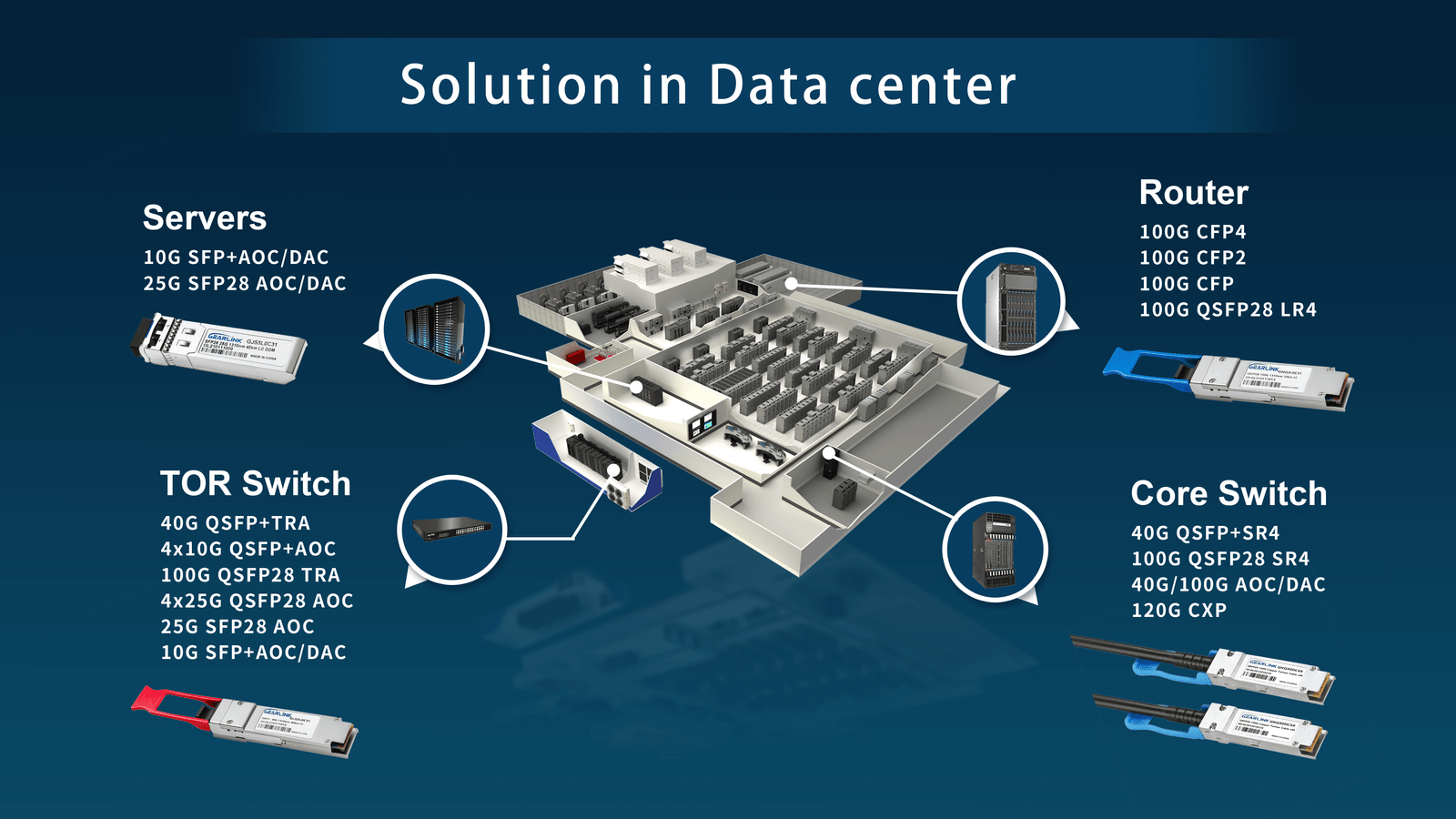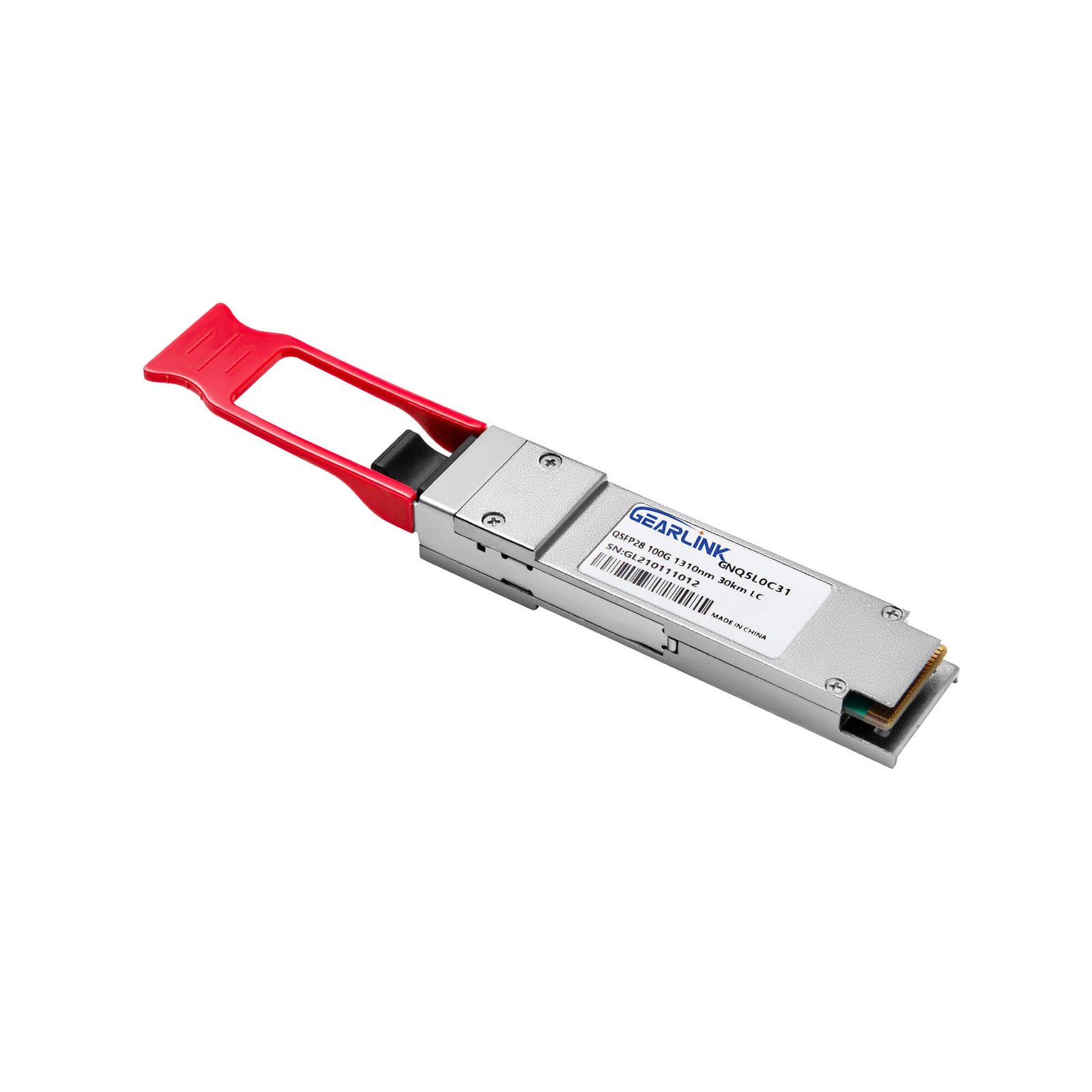1. Data Center Architecture and Interconnection Needs
1.1 Scaled Development of Data Centers
- Modern data centers are no longer standalone machine rooms but rather large-scale clusters composed of multiple facilities.
- These centers must operate in coordination to ensure the smooth functioning of internet services.
1.2 Interconnection Demands and Optical Fiber Communication
- Massive volumes of data flow between data centers, driving the demand for high-speed interconnection.
- Optical fiber communication has become the go-to solution for high-speed, high-capacity network connectivity.
- Optical transceivers, as the core components enabling optical-electrical signal conversion, play a key role in achieving high-speed, low-power, and compact communication systems.
2. Key Application Scenarios for Optical Transceivers in Data Centers
2.1 Internal Communication
- Optical transceivers are used for information storage, generation, and extraction between various devices within a data center.
- Internal traffic accounts for the majority of total data transmission within the data center.
2.2 Data Center Interconnect (DCI)
- Facilitates data replication, software updates, and system upgrades across different data centers.
- Requires high-capacity and high-density data transmission, placing greater demands on equipment performance.
2.3 Data Center to End-User
- Connects user terminals to cloud-based services, supporting everyday applications such as video streaming, article browsing, and email communication.
3. Current Landscape of High-Speed Optical Transceiver Deployment
3.1 Market Drivers
- The continuous construction of new data centers is fueling the growth of the high-speed optical transceiver market.
- Most newly built or upgraded data centers now adopt 40G and higher-speed optical transceivers to meet ever-increasing bandwidth demands.
3.2 Advantages and Features
- High-bandwidth transmission: Capable of handling large-scale data exchange requirements.
- Low-power design: Although high-speed operations consume more energy, ongoing technological improvements are enhancing power efficiency.
- Miniaturization and integration: Compact form factors enable high-density deployments.

4. Challenges Facing High-Speed Optical Transceivers
4.1 Interference Issues
- As systems evolve from single-channel to multi-channel simultaneous transmission, the risk of signal interference increases, potentially affecting link stability.
4.2 Power Consumption and Heat Dissipation
- 40G and 100G optical transceivers consume significant power during operation and can generate substantial heat, requiring efficient thermal management solutions.
4.3 Transmission Distance Limitations
- While low- and mid-speed optical transceivers can support transmission distances of up to 120 km, high-speed modules are primarily optimized for intra-data center connectivity, with limited applicability for long-distance interconnects.
4.4 Cost Pressures
- High-speed optical transceivers are relatively expensive, representing a significant portion of total data center infrastructure investment.
5. Conclusion and Outlook
5.1 Application Prospects
- As large-scale data centers and cloud services continue to grow rapidly, demand for bandwidth and transmission performance is on the rise, making high-speed optical transceivers increasingly valuable.
- Optical transceivers play an indispensable role across internal communication, inter-data center connectivity, and connections to end users.
5.2 Maturity of the Technology
- Current high-speed optical transceivers are already being mass-produced and shipped in volume, with quality proven through extensive customer validation.
- With ongoing technological advancement, future improvements will further reduce power consumption, mitigate interference, and lower costs, providing stronger support for data center infrastructure development.


